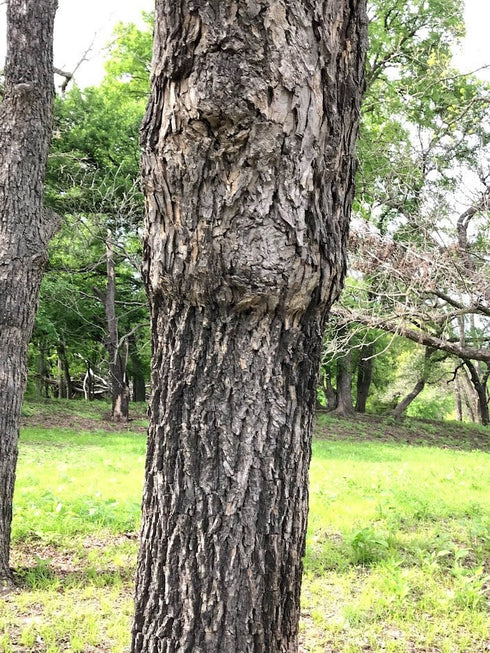
F. R. Brison Department of Horticulture, A&M College of Texas College Station, Texas
The early programs of the Association included many topics on propagation of pecans. As the years have unfolded and as propagation methods have become more generally known, our programs have been devoted to other problems of orchard management. In the meantime new members have come into the Association and there is currently a revival of interest in propagation---particularly in top-working native pecan trees.
There are countless millions of native pecan trees of varying sizes in Texas. Two general systems of management are followed with these trees:
- One system is to do nothing about them. If the trees are old and is low state of vigor, doing nothing about topworking them is perhaps justifiable. If they are extremely large, we are justified in hesitating and ultimately doing nothing. It is a big job to topwork a big tree---and it cannot be done by resolution! If the trees are in poor soil, a do-nothing approach is the wisest policy. If the native pecans produced by trees are really good, first-class pecans, the returns from them may be equally as satisfactory as if the trees are topworked to standard varieties.
- Another system of management is to do something about these native trees. (a) They can be dehorned and finally topworked by budding onto young sprouts. (b) Another system is to topwork directly by inlay grafting.
Steps in Topworking by Inlay Grafting
The first important step in topworking by inlay grafting is to remove the old top. This can be done several weeks before the grafting season---in which case it is called pre-dehorning. Removing the old top is the most burdensome part of the topworking job. Pre-dehorning enables the operator to get that much of the work done ahead of time. It allows him more time for the actual grafting operation. The favorable grafting season is relatively short---normally four to five weeks. Any schedule of operations that will allow the propagator more time is an advantage.
In pre-dehorning (usually in January or February), a lip is left on the dehorned stub. This lip is cut off when the tree is grafted several weeks later. This is done to provide fresh living tissue for insertion of the graft.
Pre-dehorning results in less loss of valuable stored food from the trees than when they are cut back after considerable growth has been made. The removal of the old top can be done at the time the tree is to be grafted in April or early May. If only a few trees are to be topworked and time is not a limiting factor, current dehorning is recommended, since it can be done quickly and the job is not especially time-consuming. When a power saw is used for pre-dehorning, no effort is made to cut so as to leave a lip. To do so is inconvenient, and it is easier to re-cut the entire stub than to leave a lip and re-cut it.
Size of Limbs
Inlay grafts can be readily inserted in limbs that are from 1½ to 3 or 4 inches in diameter. Those that are 2 to 3 inches are preferred. Inlay grafts unite readily, make vigorous growth, and quickly replace the old top. They also quickly begin to bear, which is the object sought.
If limbs are cut back at points where they are large in size, the grafting operation is easier, and fewer grafts are required, but a longer period is required for the tree to come back into full production.
Scions
Scions for inlay grafting may vary some in size. Those for small limbs may be ½-inch in diameter or even slightly less. Those for large limbs should be ½-inch in diameter or slightly larger. These scions should be cut in late winter while they are still fully dormant. They may be obtained either from one-or two-year-old limbs. They should be kept thoroughly dormant in cold storage until used.
Season
Inlay grafting can be done successfully as soon as the bark begins to slip readily on the limbs that are to be grafted. This will be several days after the terminal buds begin to swell and the bark has begun to slip on small limbs near the terminals. In Central Texas the dates of April 15 to May 15 are usually favorable for inlay grafting. There may be days during this period when the stubs will bleed. Poor results are obtained with grafts inserted when this occurs, and grafting should be delayed for a few days until the exudation of the sap no longer occurs.
After Care
Inlay grafts normally make very vigorous growth. If it becomes excessive, the grafts should be cut back to prevent them from becoming so top heavy that they are likely to be blown out by wind. During the first and second year, many native sprouts will develop on the stub below the grafts. These are helpful to the tree and should be allowed to grow, but should be pruned when they begin to shade or crowd growing grafts. If grafts fail to grow on certain stubs, native sprouts that grow on them can be budded during the following late summer.

